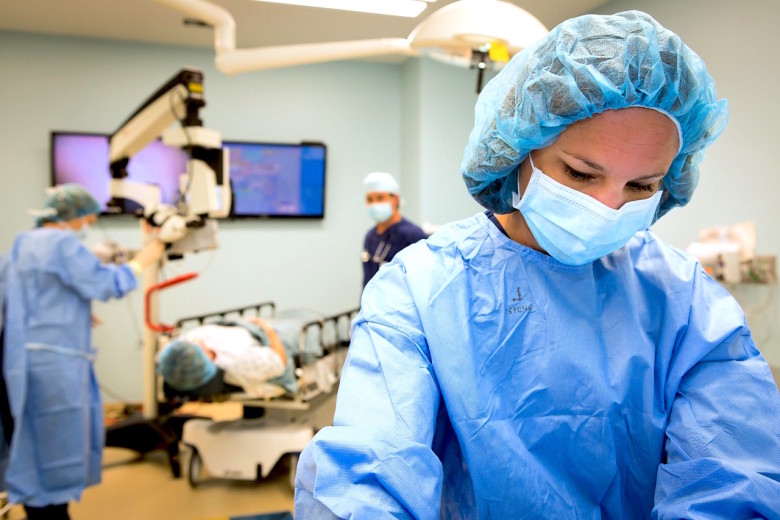The recent headline that hospital errors are considered the third leading cause of death in the United States is tough to swallow. Hospitals and healthcare providers across the country are working hard — every day, every minute — to provide patients the best, safest, most expert care possible. And it’s still not enough. Or is it?
Healthcare is safer now than it was 15 years ago — that’s not in doubt. However, it’s not that providers and facilities aren’t striving hard enough to prevent medical errors but, rather, that total system safety is still lacking. That is, we need to improve the systems and structures of support that help providers work together and make facilities run more smoothly. With that in mind, here’s a look at three ways to enhance total systems safety, to reduce preventable medical errors.
1. Emphasize communication
Communication between patients and providers — and across providers and departments — is necessary to ensure patient safety. In the OR, for example, ineffective communication is the most common cause of sentinel events during surgery. Broadly, it’s important that staff, from nurse assistants through specialists, feel comfortable asking questions and flagging potential issues with care. One way to encourage all care providers to focus on teamwork and communication is to introduce a short briefing at the beginning of each shift. Not only does this addition to the routine refresh everyone about who’s on the ward and the special plans to keep in mind, it saves time over the course of the day and imbues a sense of teamwork in everyone who will come into contact with patients. Another option is to embrace a communication-enhancement program, such as TeamSTEPPS, which advises that communication have checks and balances, to improve governance. In addition, TeamSTEPPS has been shown to help improve leadership behavior, the quality of briefings, teamwork behaviors and perceptions of patient safety culture.
A more specific step is to use certified medical scribes, who document patient encounters in real-time, helping physicians concentrate on communicating with patients, in order to make more accurate diagnoses as well as to better convey education to patients. In addition, scribes help physicians communicate more efficiently among providers and departments (e.g. laboratory and radiology, other specialists), aiding the coordination of planning and maintaining the flow of tasks. Additionally, the work scribes contribute is a crucial link between acute and non-acute settings, as detailed documentation of patient events within the acute care hospital can facilitate safe transitions and the determination of appropriate next steps.
2. Reduce variation
Reducing unwanted variation in practices is important to improving safety. The business world has known about “microdecisions” for a long time. From the Harvard Business Review: “What many companies don’t realize is that microdecisions — small decisions made many times by many workers at the customer interface — can have a major impact on the business. How they are made can be the difference between sloppy and effective execution, and between profit and loss.
“If you can identify a few key microdecisions that can be addressed and improved, you can often dramatically improve performance.”
The idea is that the burden of making hundreds and thousands of small decisions over the course of a day or shift builds up over time, blurring mental focus, and making decision-making less sharp. Standardizing key activities — such as by developing both an order set and interdisciplinary pathway, and educating physicians and hospital staff in their use — helps physicians under pressure to make decisions quickly and accurately. By reducing the unwarranted variations in medical practice that arise in microdecision scenarios, you can make sure variation arises where it’s wanted to keep patients safe: when high-level expertise and flexibility are needed according to a patient’s specific needs, or due to the requirements of complex and specialized care.
3. Minimize distractions
In the hospital, distractions tend to come in the form of interruptions. The good news is, using certified medical scribes can help minimize these distractions. Think about the benefits: Scribes can be tasked with delivering messages between providers, and to patients and their families or carers. In addition, a scribe can help the physician keep track of tasks to be completed during rounds by recording notes from the tech, nurse, or another department. This lets the doctor manage new requests in order of actual priority, rather than the order in which they are delivered — which minimizes distractions to ensure the care plan for the patient in the room is executed in a timely manner. The scribe can also play a critical role in keeping the physician on track to revisit patients or follow up on test results — or to ensure a nurse visits a patient to provide care directed by the physician. Furthermore, the scribe can collect reports from the lab, track time and provide notes to patients from the physician. All these efforts enhance teamwork and keep the physician focused, so that missed messages or miscommunications don’t result in an error that could have been prevented.



